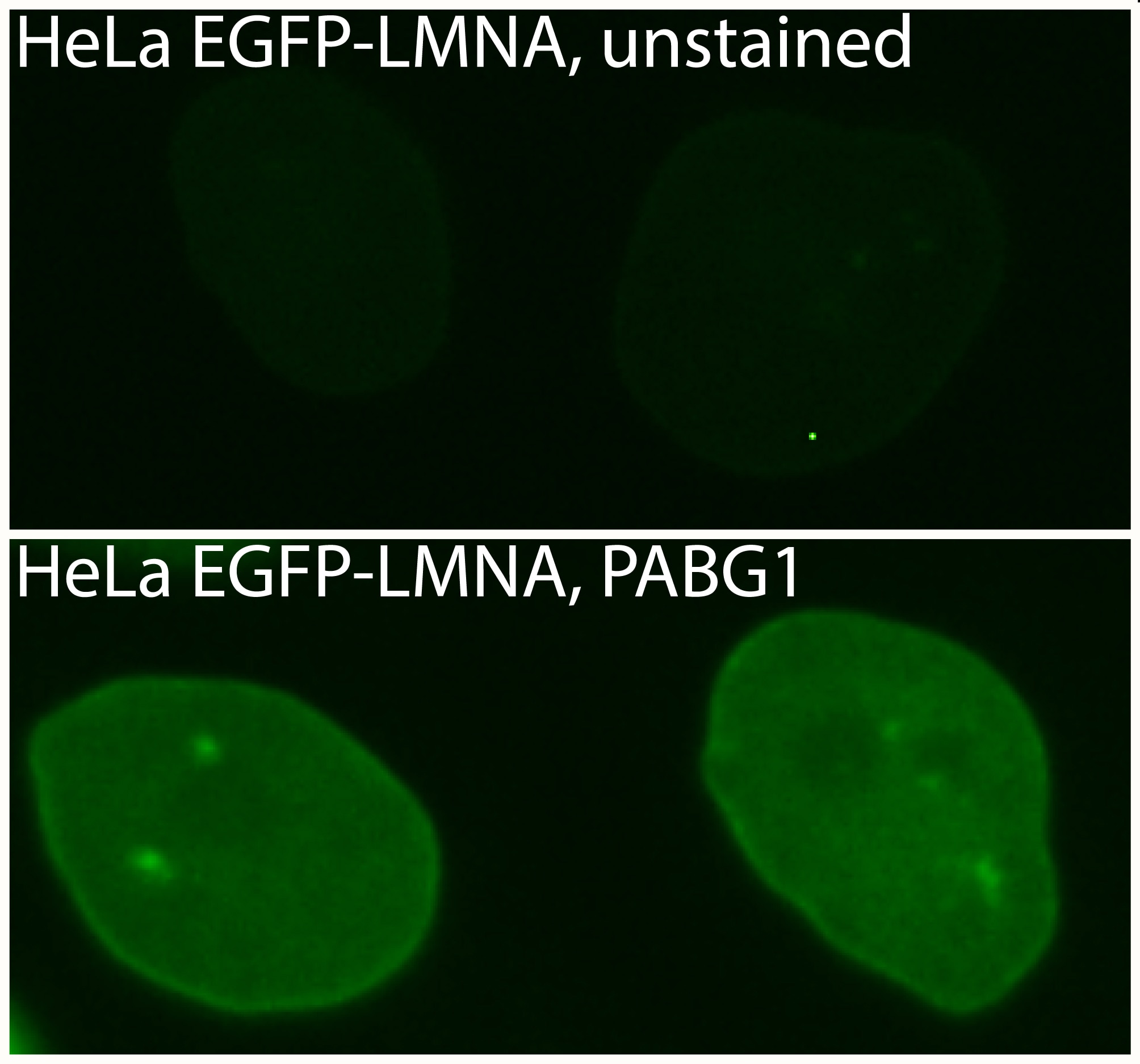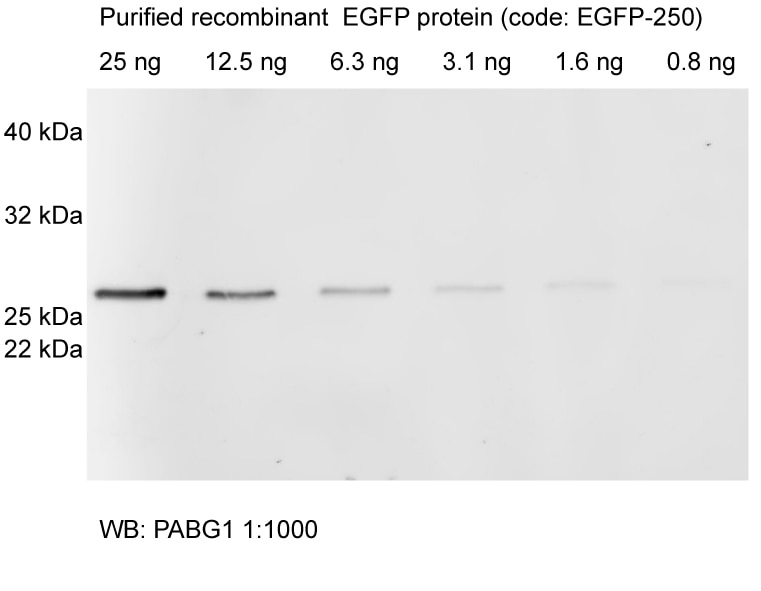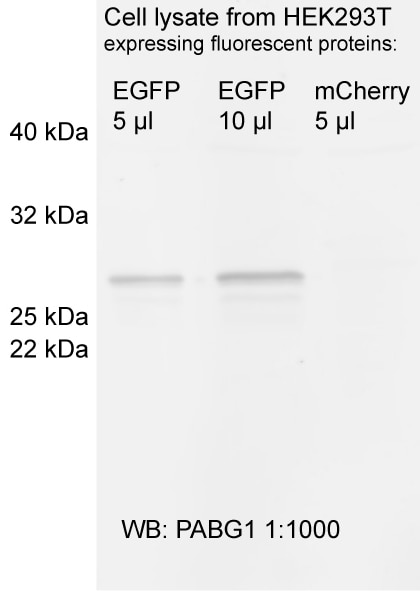Validation Data Gallery
Product Information
Rabbit polyclonal antibody to Green Fluorescent Protein
| Description | Rabbit polyclonal antibody to Green Fluorescent Protein |
| Applications | WB, IF/ICC |
| Specificity/Target | The antibody recognizes green fluorescent proteins derived from Aequorea victoria GFP, such as CFP, EGFP, wtGFP, pHluorin (ecliptic), TagGFP, YFP, pHluorin, GFP. For the complete list, please click here: Fluorescent protein specificity table antibodies |
| Recommended Dilution | Western blot: 1:1,000 IF/ICC: 1:1,000 |
| Host/IsoType | Rabbit / IgG |
| Class | Polyclonal |
| Type | Antibody |
| Immunogen | Green Fluorescent Protein (GFP) |
| UniProtKB | P42212 |
| Conjugate | Unconjugated |
| Form | Liquid |
| Purification Method | Antigen affinity purification |
| RRID | AB_2749857 |
| Storage Buffer | Buffered aqueous solution. Preservative: 0.09% Sodium Azide |
| Storage Condition | Shipped on blue ice. Store at +4°C short term (1-2 weeks). Aliquot upon delivery. Store at -20°C or -80°C long term. Avoid freeze-thaw cycles. Stable for one year. |
| Size | 20 µL; 100 µL |
| Background | Green Fluorescent Proteins (GFPs) encompass a diverse range of proteins carrying a green chromophore, originating from various species and forming different protein lineages. Wildtype GFP consists of 238 amino acid residues (26.9 kDa). GFP was first identified in the jellyfish Aequorea victoria. It emits green light with a peak wavelength of 509 nm upon excitation by blue light at 395 nm. When fused with other proteins, GFP serves as a versatile reporter protein e.g. for quantifying expression levels or facilitates visualization of subcellular localization through fluorescence microscopy. This antibody is a rabbit polyclonal antibody against GFP, reactive to wtGFP, EGFP, CFP, TagGFP, YFP, and pHluorin. |
Documentation
| SDS |
|---|
| PABG1_SDS_GFP antibody rabbit polyclonal [PABG1] (EN) |
| Datasheet |
|---|
| GFP Polyclonal antibody Datasheet |
| ANTIBODY SPECIFICITY |
|---|
| Fluorescent protein specificity table antibodies |
Publications
| Application | Title |
|---|---|
Nature Equilibrium between nascent and parental MCM proteins protects replicating genomes. | |
Nat Commun SPRTN patient variants cause global-genome DNA-protein crosslink repair defects | |
Nat Commun TRAIP resolves DNA replication-transcription conflicts during the S-phase of unperturbed cells | |
Mol Cell RNF14-dependent atypical ubiquitylation promotes translation-coupled resolution of RNA-protein crosslinks | |
Mol Cell DNA Structure-Specific Cleavage of DNA-Protein Crosslinks by the SPRTN Protease. | |
Sci Adv The impact of C-tactile low-threshold mechanoreceptors on affective touch and social interactions in mice. |
Reviews
The reviews below have been submitted by verified Proteintech customers who received an incentive for providing their feedback.
FH Nasser (Verified Customer) (02-10-2022) | We have used this antibody to detect a pHlourin tagged TRPV1 channel in dorsal root ganglia extracted from transgenic mice. It has worked very well to enhance the signal with high specificity. I recommend this antibody.
|
FH José (Verified Customer) (12-02-2021) | This antibody is really usefull. It is very specific and low background.
|
FH Carlos (Verified Customer) (11-22-2021) | This ab is one of the best I have tried both in WB and IF.
|



